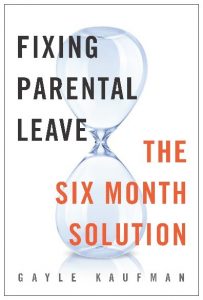
A briefing paper prepared for the Council on Contemporary Families Defining Consent Online Symposium (.pdf).
This symposium is a testament to our substantial but still partial progress around issues of sex and consent. When I went to college in the 1970s, a half century ago, acquaintance rape was common, but victims had no term for it, no remedy, no education, no understanding of its frequency, and no sense that they might not be solely responsible. If women spoke of the problem—and mainly we didn’t—we referred to it as bad sex. Or a mistake not to be repeated. And the mistake was always ours, never his.
All that has changed. We have named and measured the problem, and established countless legal and programmatic initiatives to address it. Yet campus sexual assault and abuse remain pervasive. Estimates suggest that about one in five college women is a victim of rape, although precise figures are unavailable given the absence of consistent definitions in nationally representative samples. With my gender textbook coauthors, I have written elsewhere about the complicated causes of the problem and the inadequacy of our legal strategies. Here, I want to focus on three of the most vexing issues surrounding this topic: the difficulties of defining and enforcing affirmative consent; the problems relating to substance abuse and role of alcohol; and the challenges of designing effective education, prevention, and risk reduction programs.
Definitions of consent
When campus sexual assault first gained traction as a social issue, reformers attempted to change laws and practices to recognize that “no means no” and that forcible resistance was not required. At the time, even this change was controversial, because studies by Jozkowski and Emmers-Sommer indicated that women sometimes initially protested even when they wanted sex, in order to avoid looking promiscuous. In fact, however, it soon became obvious that requiring an explicit “no “did not always protect students from nonconsensual sex. As Kipnis (2017) says, in what is often called “gray rape,” “bad sex,” or “regret sex,” students may have sex when they don’t want to because they don’t feel able to say no or because their partners proceed without asking. According to West and a New York Times survey of a group of college students, reasons students engage in unwanted but not forcible sex include peer pressure, a desire to attract, retain, or not antagonize a partner, and a wish not to appear a “tease.”
Ambiguity can also arise when a woman says “no” once but then does not repeat it later on. Consider the following situation described by a female Swarthmore student: a male friend with whom she had been sexually involved fell asleep on her bed. Because the two had decided, she thought mutually, just to be friends, she climbed in next to him. When he began taking off her clothes, she reported later, “I basically said, ‘No, I don’t want to have sex with you.’ And then he said, ‘Okay, that’s fine,’ and stopped.… And then he started again a few minutes later, taking off my panties, taking off his boxers. I just kind of laid there and didn’t do anything — I had already said no. I was just tired and wanted to go to bed. I let him finish. I pulled my panties back on and went to sleep.” She told a drug and alcohol counselor about the incident, who responded that the student was “such a good guy” that she must be mistaken. Three months later she complained to a dean. The students both graduated, and she never learned the outcome of any investigation.
One reaction to such sexual dynamics has been to require an affirmative “yes” for a sexual encounter. According to Grigoriadis, an increasing number of colleges and universities use some type of affirmative consent definition in their sexual assault policies, and a number of states, including New York and California, require publicly funded schools to adopt such policies. However, expecting verbal consent may be unrealistic in youthful sexual relationships, leaving open the possibility of inconsistent enforcement. In one recent survey at Columbia University, students reported that affirmative consent, the school standard, rarely figured into their sexual experiences, even those that were desired by both parties.
Substance Abuse
According to one study, in a majority of campus rape cases both parties have been drinking or taking drugs and often suffer from impaired judgment related to substance abuse. Some research suggests that it is not drinking itself that increases the likelihood of sexual assault but rather the context in which drinking takes place: party subcultures, in which what some psychologists call “rape myths,” such as the idea that men can’t control themselves once they become sexually excited, are widely accepted and sexual aggression is normalized. In such settings, alcohol is “often used to create a gray area, a realm of plausible deniability where no one supposedly has to take responsibility for what he (or she) wanted to do,” according to Knapp. But it is also true that being intoxicated increases the possibility of misinterpreting social cues. Should alcohol abuse be a mitigating factor for the perpetrator (he wasn’t fully in control of his actions) and/or an aggravating factor for the complainant (she shouldn’t have put herself in that position)? Or is it the responsibility of defendants to know that victims’ intoxication makes them incapable of consent? And what criteria should be used to determine when someone has crossed the line from being slightly disinhibited to being incapable of consent?
Consider the following situation. In a 2014 case at Yale, a young woman drinking with friends exchanged text messages with a former sexual partner in which she told him that she was getting drunk and stated “don’t let me try to seduce you…. Sex is awesome…and I might try to get it from you. But I shouldn’t. I don’t think.” The two eventually did engage in sex that evening and she later charged him with assault, claiming she was too intoxicated to do anything other than “capitulate.” An adjudicative panel found that while “alcohol may have reduced [her] inhibitions,” her actions “taken as a whole, do not indicate that she lacked the ability to make or act on considered decisions.”
Many campuses have responded to such difficult cases, as well as other harms associated with substance abuse, by banning hard liquor from campus parties and punishing violators. Such prohibitions are difficult to enforce and may encourage students to drink elsewhere, in even less safe settings. And what is the proper response when both students violate such rules? On the one hand, Brent Sokolow, President of the National Center for Higher Education Risk Management, notes the unfairness when both students involved in a sexual assault are intoxicated and in violation of campus rules, but only the accused is subject to sanctions. On the other hand, campus officials worry that if they also punish students who bring complaints of assaults involving substance abuse, that would discourage reporting. According to Wilson, many feminists have been critical of initiatives that penalize victims who drink instead of just perpetrators who rape.
Education, Prevention, and Risk Reduction Programs
Over the past quarter century, campuses have launched a variety of rape education and prevention initiatives. Based on this study, common objectives include:
- Reducing attitudes that support coercive sex;
- Increasing knowledge about sexual violence, consent requirements, and reporting opportunities;
- Building empathy for survivors;
- Encouraging bystanders to intervene in high risk situations;
- Increasing resistance strategies and skills.
Researchers find that these programs can be effective in increasing knowledge and decreasing rape supportive attitudes, especially in the short term, but most have not been shown to reduce the frequency of sexual violence. However, according to Zimmerman and Henricksen et al., recent initiatives emphasizing bystander intervention, the need for consent, and risk reduction/self-defense strategies for women have shown more success. The most demonstrably effective program to date is a Canadian course for female first-year students. As a study conducted by Senn et al., explains, those who completed the course were half as likely to have experienced rape and nearly three times less likely to have experienced attempted rape as female students who did not complete the course. The program emphasizes the need for women to avoid men who speak negatively about them in general terms, who attempt to control them, or who purposely try to get them drunk or high. It encourages women to defend themselves, to have the sex they want, and to speak out. Women also learn self-defense techniques. To increase the willingness to say no, the program also educates women about the adverse effects of nonconsensual sex, such as depression and PTSD, which makes “let’s just get this over with” a less than optimal response.
Grigoriadis notes that few American universities have adopted this approach and the federal Center on Disease Control hasn’t supported it, on grounds that it doesn’t prevent assaults but simply protects certain women from experiencing them. Many feminists would prefer more emphasis on bystander intervention training and peer education among all-male groups such as fraternities and athletic teams that have too often enabled abuse. Other experts favor a public health approach, along the lines of Columbia University’s Sexual Health Initiative to Foster Transformation. This program began by collecting a large amount of data on students’ sexual experiences with an eye to identifying the most effective prevention and support services. Although the work is still ongoing, a 2019 report summarized key findings and made a number of recommendations. The study indicated that nearly a quarter of Columbia students had experienced unwanted non-consensual sexual contact, two thirds of these were linked to alcohol use, and only two percent of students made a formal report. It recommended that “educational initiatives on campus should consider a broad range of topics, going beyond consent to include positive and healthy social and sexual relationships, sex education, sexual refusal skills, and bystander training.” No single approach was likely to be effective in addressing all the different kinds and causes of sexual abuse.
Many schools, including Columbia, are also grappling with how to provide fair procedures for all concerned. According to Grigoriadis, Yoffe, and Kipnis at least a hundred men have sued universities for unfair proceedings, with allegations including shoddy investigations, biased adjudication, and inadequate opportunities to review charges, present evidence or question witnesses. Anti-rape activists have sometimes minimized these concerns. In a widely circulated Washington Post op-ed concerning false allegations at the University of Virginia, Zerlina Maxwell wrote:
“We should believe, as a matter of default, what an accuser says. Ultimately, the costs of wrongly disbelieving a survivor far outweigh the costs of calling someone a rapist. … The accused would have a rough period.…But false accusations are exceedingly rare, and errors can be undone by an investigation that clears the accused, especially if it’s done quickly.”
Maxwell cites no evidence to support these assertions, and according to Kipnis there are many examples to the contrary—men whose lives have been upended based on allegations that are found to be unsupported or circumstances in which complainants did not clearly communicate non-consent. Labeling someone a rapist can carry enormous, and sometimes permanent, reputational, and career costs. Campuses need to work harder to create processes that are fair, and perceived to be fair, to all stakeholders.
If we have learned anything from the last two decades of campus assault initiatives, it is this: When it comes to sex, talk is cheap but cultural change is not. Over the last half century we have made enormous progress in understanding the causes and consequences of unwanted and nonconsensual sex. Our challenge now is to engage in more experimentation and evaluation of efforts to prevent it.
Deborah L. Rhode is the Ernest W. McFarland Professor of Law and the Director of the Center on the Legal Profession at Stanford University, rhode@stanford.edu.











